|
Ornaments
|
|||||||||||||||
|
|
|||||||||||||||
|
Well worth knowing and quite a large topic starting at grade 4 theory.
|
|||||||||||||||
|
It should be noted that the descriptions below are generally acceptable and correct; there are however different interpretations of the ornaments depending on the context in which they occur, genre and tempo at which they are to be played.
|
|||||||||||||||
| The Acciaccatura (Italian word meaning 'crushed in') is played as quickly as possible before the principal note is heard. | 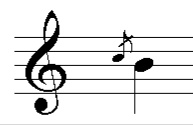 |
||||||||||||||
| The Appoggiatura (Italian word meaning 'to lean') is as important as the note to which it is leaning. It takes half the value of the principal note unless the principal note is dotted where it then takes two thirds of the value of the principal note. | |||||||||||||||
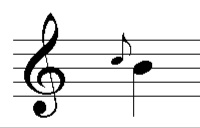 |
|||||||||||||||
| The Upper Mordent consists of the principal note, the note above then back to the principal note making up the rest of the principal note's time. | 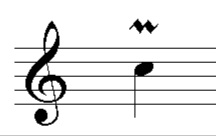 |
||||||||||||||
| The Inverted Mordent consists of the principal note, the note below then back to the principal note making up the rest of the principal note's time. | 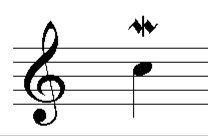 |
||||||||||||||
| The Upper Turn consists of a group of four notes; the note above the principal note, the principal note, the note below the principal note and the principal note. |  |
||||||||||||||
| The Inverted or Lower Turn replaces the above pattern with its inversion i.e. starting with the note below the principal note. | 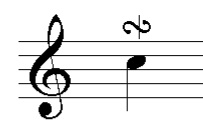 |
||||||||||||||
| The Trill or Shake is played by rapidly alternating between the principal note and the note above. In modern music the trill usually begins on the principal note. Earlier music by composers such as Bach and Haydn intended the trill to start on the note above. | |||||||||||||||
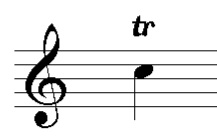 |
|||||||||||||||